Riot Grrrl: The 90's Feminist Punk Movement
The journey to make feminism more punk, and punk more feminist.
Bikini Kill is a feminist punk band that released their first studio album, Pussy Whipped, in 1993. They broke up in 1997, but recently did a revival tour, and I was blessed enough to see them live in concert in Perth, Western Australia, in 2023.
It truly was one of the best nights of my life. I had no one to go to the show with, so I went alone, in a foreign country, and I have never felt safer. The entire crowd was a beautiful mix of all generations. Some boasting full leather, hair gel, and heavy boots that made the floorboards bend — others blended in with mundane workers on the street, embodying punk spirit rather than adorning themselves in it. An almost tangible discontent for the system was consistent throughout. It was home.
Bikini Kill was integral to the 1990’s Riot Grrrl movement, which was born in Washington, D.C. in 1991, quickly spreading across America and the UK (D’ Angelica, 2009). At the time, and historically, many music scenes, such as rock, were heavily male dominated.
Bikini Kill performing with Joan Jett
(Ebet, 1994)
Punk was different. British sociologist Angela McRobbie holds that women helped create punk in already existing subcultures in the early 1970s, rather than the popular misconstrued sentiment that men allowed women into punk (Dunn, 2014).
In the UK, punk is heavily associated with bands like the Sex Pistols, and creatives like Vivienne Westwood. In America, with bands like Blondies, The Cramps, and Misfits.
The female presence at the inception of punk eventually fizzled out due to inevitable American patriarchal influence, and the resurgence of hardcore 1980s punk, which somehow erroneously became synonymous with masculinity (Lottermoser, n.d.). Bands like Black Flag and Minor Threat were heavier, faster, and more volatile than previous 70s punk. Hardcore punk was characterized by the slashing and crashing of body parts in violent stage front moshing — being almost explicitly male (D’Angelica, 2009).
By the late 1980s, a female-led backlash rippled through the punk scene, reclaiming the original gendered diversity.
This backlash culminated in the spring of 1991, when the Riot Grrrl movement was brought to life by Allison Wolfe, Molly Neuman, and Jen Smith’s collectively authored feminist zine dubbed Riot Grrrl (Dunn, 2014). Wolfe and Neuman were members of the brand BratMobile, while Smith was a zine editor.
Members of BratMobile
(Graham, 1999)
Zines were homemade publications with concentrated circulation in local communities, outside of the restrictive corporate structure (Lottermoser, n.d.).
Here’s a sneak peek at what their publications looked like;
(Full versions linked below)
(Klein, 1991)
(Klein, 1992)
These intimate publications platformed young women to discuss taboo topics such as rape, incest, abuse, sexual identity and eating disorders. The zines female authors and readers took the unique social position of simultaneously acknowledging themselves as creative agents of the culture itself, and as being acted upon by the larger socio-political realities of their time (Dunn, 2014).
Band members from the influential Bikini Kill and BratMobile held weekly events, encouraging women to congregate and express their shared frustrations and grievances. The first event in 1991 had an all-female punk line up, featuring Bikini Kill, L7, BratMobile, and Heaven to Betsy (Lottermosser, n.d.).
A key component to the anti-establishment ethos of punk is DIY creation and ingenuity. Within the Riot Grrrl movement, individual members prioritized creating their own media, such as radio shows, television programs, spoken word poetry, art projects, and short films, in addition to their music and zine publications (Dunn, 2014). Dana, a member from the band Cunts with Attitude, even produced six episodes of the Riot Grrrl Variety Show for a cable channel, featuring episodes on women’s punk, feminist history, and vegan cooking (Dunn, 2014).
One of the notable community outreach initiatives I came across in my research was in 1995, when numerous Riot Grrrl’s participated in a Chainsaw Records double album, Free to Fight, which featured all-female bands, along with zine-like booklets on self-defence and violence against women (D’Angelica, 2009). Bell Hooks also participated. All proceeds of the project went towards teaching self-defence classes in low-income communities, and to fund a tour of girl bands and self-defence classes (D’Angelica, 2009).
Kathleen Hanna of Bikini Kill
(Rosier, 1992)
Like most things that women create for themselves, the movement was somewhat ruined by misrepresentation in the media. Mainstream magazines and interviews missed the point, focusing on the supposed man hating of it all, rather than the systemic, violent exclusion and oppression women finally started to express.
Corin Tucker, member of Heavens of Betsy, summed it up quite well in an interview for the Riot Grrrl Retrospective online exhibition;
I think it was deliberate that we were made to look like we were just ridiculous girls parading around in our underwear. They refused to do serious interviews with us, they misprinted what we had to say, they would take our articles, and our fanzines, and our essays and take them out of context. (Empsfm, 2008)
An important consideration regarding the Riot Grrrl movement is that despite some surface level intentions, the movement was extremely white, and often excluded women of colour and working-class women who did not have the means or relate to the type of women who could start a band or zine (D’Angelica, 2009).
Many of the originators of the Riot Grrrl movement were middle class, with well-educated, typically white left-leaning families that had the means to provide material support.
There is some nuance, as one Riot Grrrl, Gina Young, held that while maybe the D.C. scene was whiter, the New York scene was racially diverse, even having their own Black Grrrl Revolution (D’Angelica, 2009). Most notably being the band Sistagrrrl Riots, a black female punk band formed in 1997, who some tout as the “feminist mother to afro-punk” (Adebowale, 2021).
1997 Photo of Sistagrrrl Riots
(Coleman, 2023)
Young holds that the constant claim that Riot Grrrl was white, erases the important work that Grrrls of colour were doing (D’Angelica, 2009).
Another perspective from Megan Smith, a Riot Grrrl consumer in her youth, is that the Riot Grrrl movement “couldn't speak to the needs of communities of colour or the working class who bear the brunt of capitalist exploitation because it had no solution/analysis of the problems that they face” (D’Angelica, 2009).
In sum, I find the anger expressed through Riot Grrrl music refreshing and raw. It may not be everyone’s taste, but when listening to it, I feel like you are giving life to a staunchly punk, feminist, and subversive perspective that we so desperately need to have at the table.
I want to kindly remind everyone that times of political strife and isolation have always existed. Riot Grrrl was born in part due to political conflict related to the 1991 Mt. Pleasant Riots. During these times especially, we must remember that we ourselves are agents of cultural change. Look within your communities and create the refuge you seek.
While it is easy to look back and call past work not disruptive enough, I cannot help but wonder if what we now critique as out of touch is more than anything we have going for us today, at least when I look at my own communities. An intersectional, revitalized, and nuanced take on Riot Grrrl’s anti-establishment, punk, and feminist roots may be useful to help combat the ensuing reactionary rise in fascist ideology.
I like how Wolfe of BratMobile summarized the Riot Grrrl movement’s intention as finding the "cross section between punk rock feminism and academic feminism…to make feminism more punk and to make punk more feminist" (D’Angelica, 2009).
Bands and songs I recommend;
Band: Bikini Kill
Songs: Rebel Girl, Double Dare Ya, Carnival, Suck My Left One, Resist Psychic Death, I Busted in Your Chevy Window, I Like Fucking, Rah! Rah! Replica, Anti-Pleasure Dissertation, In Accordance to Natural Law
Band: L7
Songs: Shove, Fast and Frightening, Packin’ a Rod, Deathwish, Shitlist
Band: Babes in Toyland
Songs: Bruise Violet, Sweet 69, He’s My Thing, Bluebell, Right Now, Dust Cake Boy
Band: LunaChicks
Songs: Less Teeth More Tits, Luxury Problem, Bitterness Barbie, Fallopian Rhapsody, Binge and Purge, Born 2b Mild
Other bands that are either Riot Grrrl or Riot Grrrl-adjacent; BratMobile, 7 Year Bitch, Sleater-Kinney, Hole, The Slits, Heavens to Betsy, Pussy Riot, and Cold Meat.
My playlist is here, if interested <3:
Links to DC Public Library Archives to read the original Riot Grrrl zines (downloadable PDF’s via the websites link):
Riot Grrrl Zine #1
Some photos and videos from the Bikini Kill concert I attended in 2023 at The Rechabite in Perth, Western Australia!!!

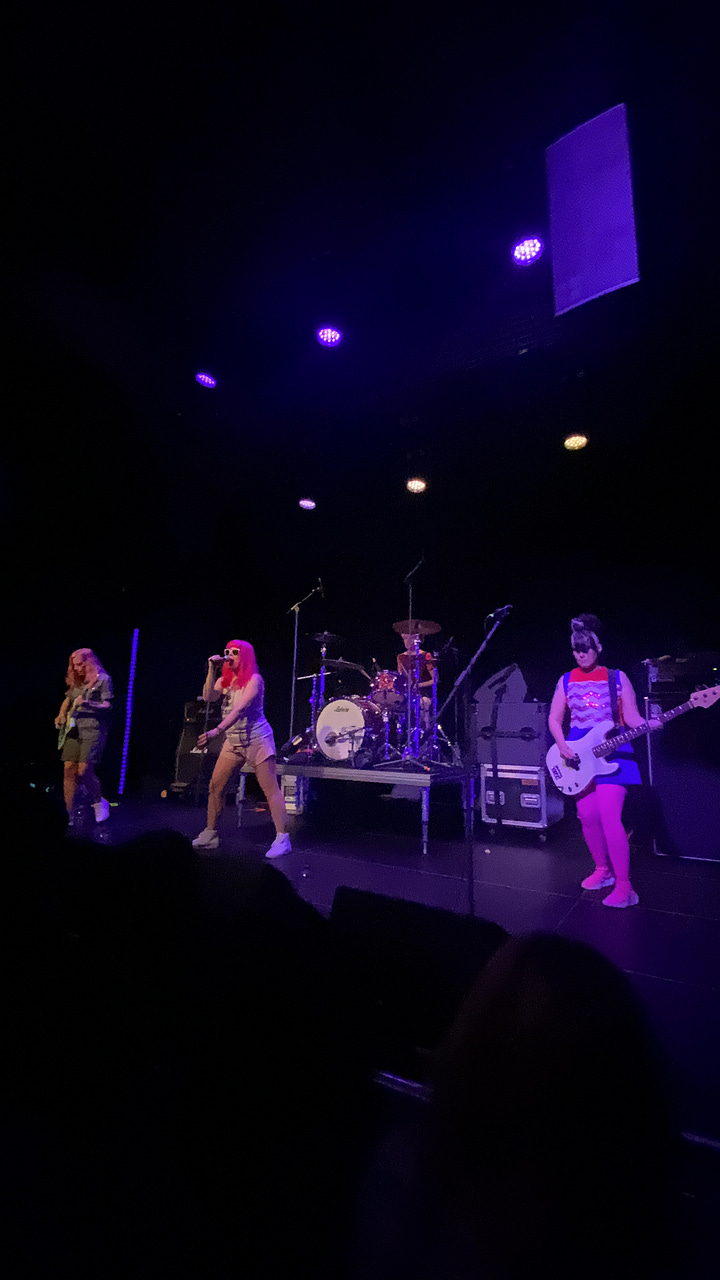
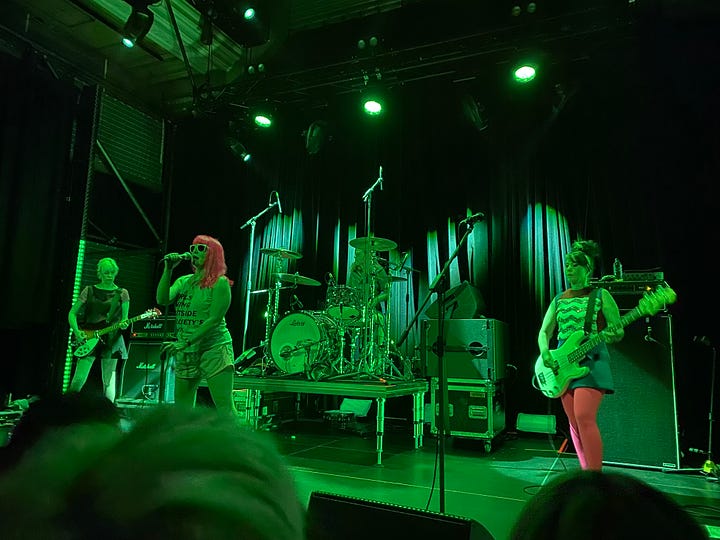
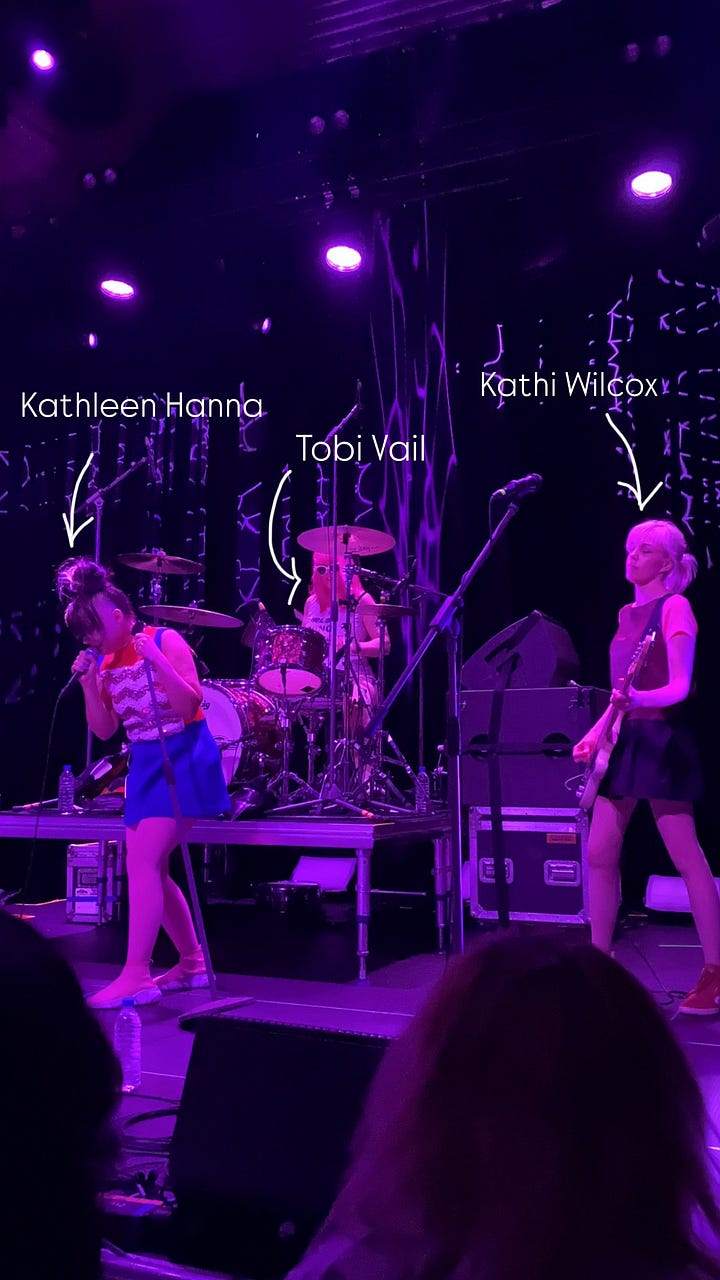





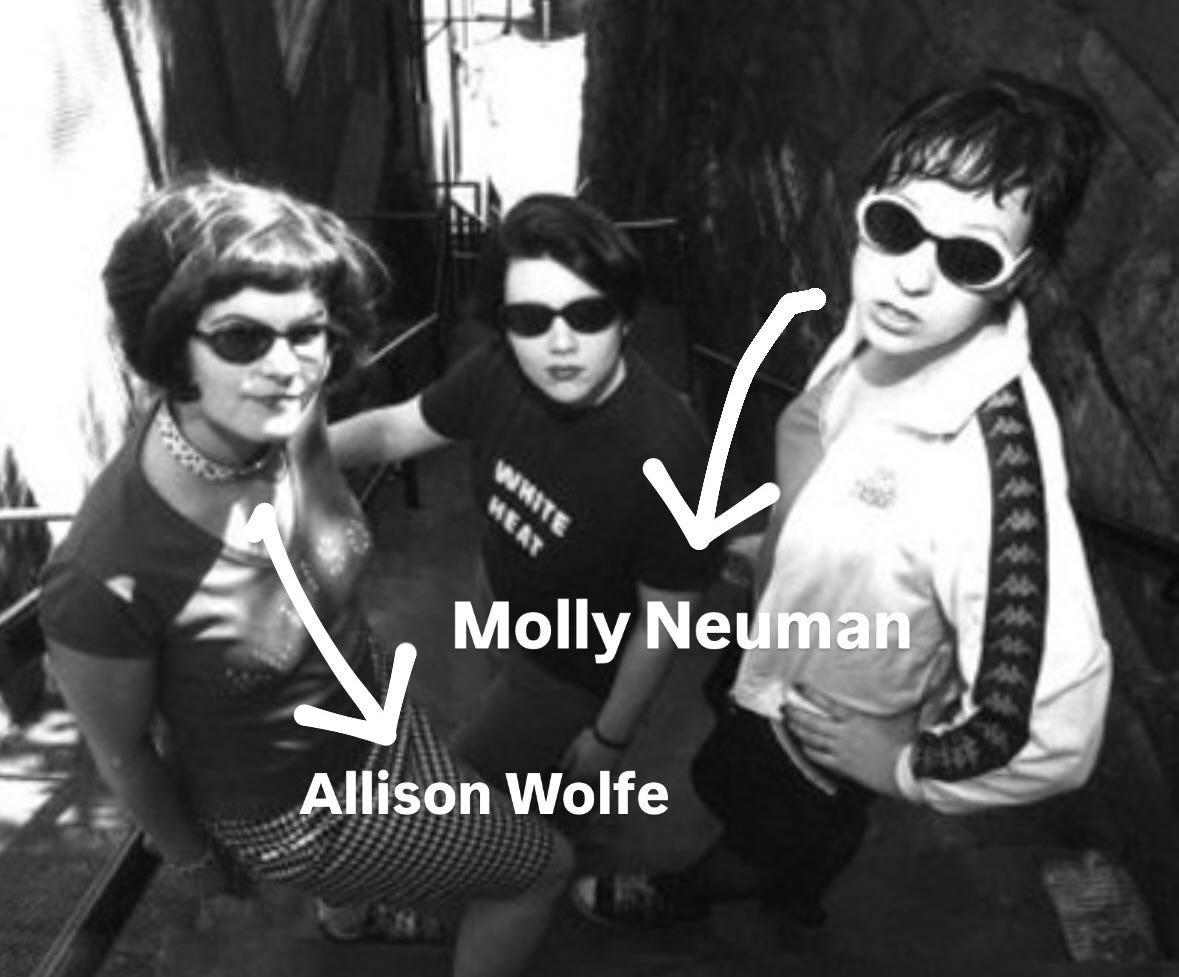

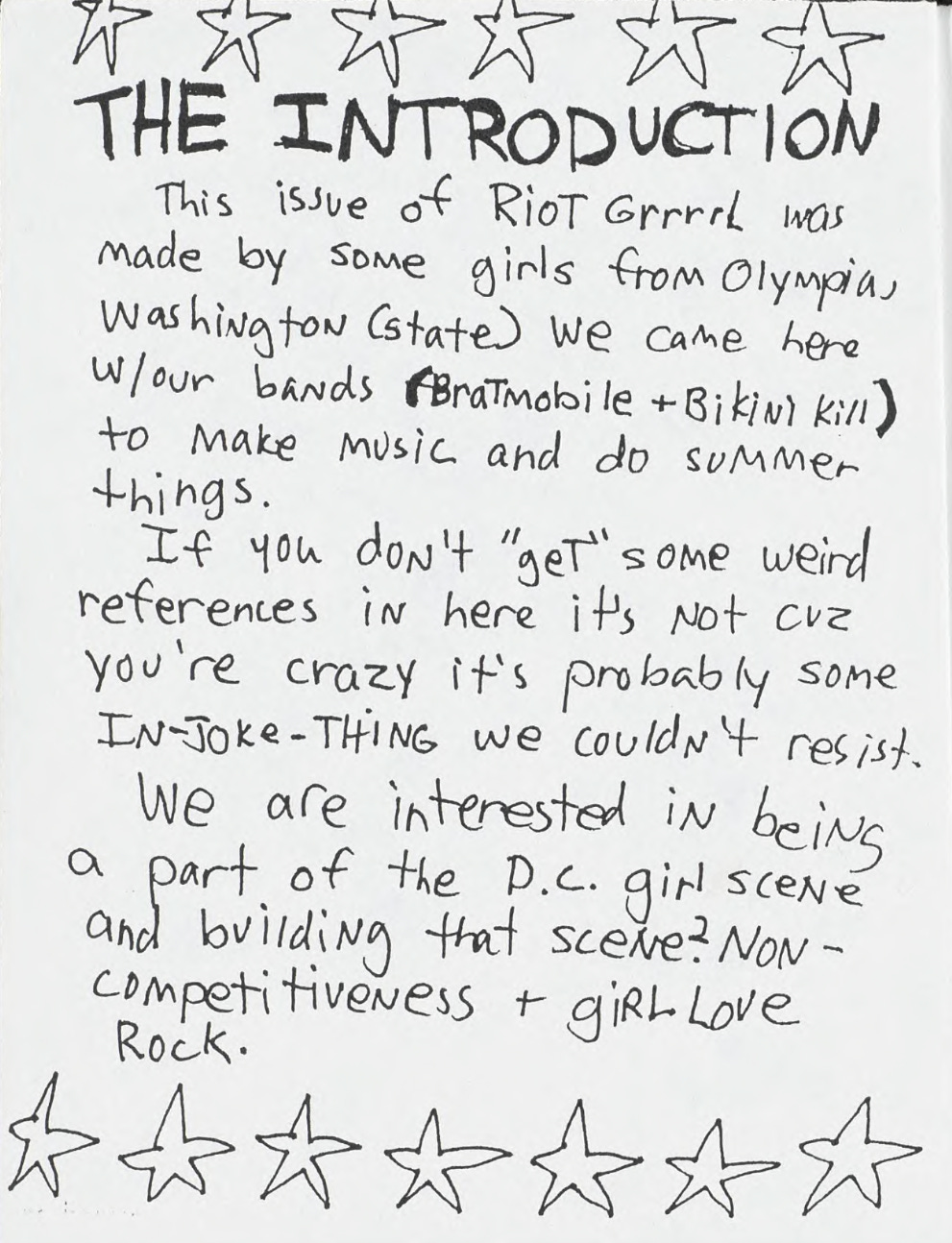

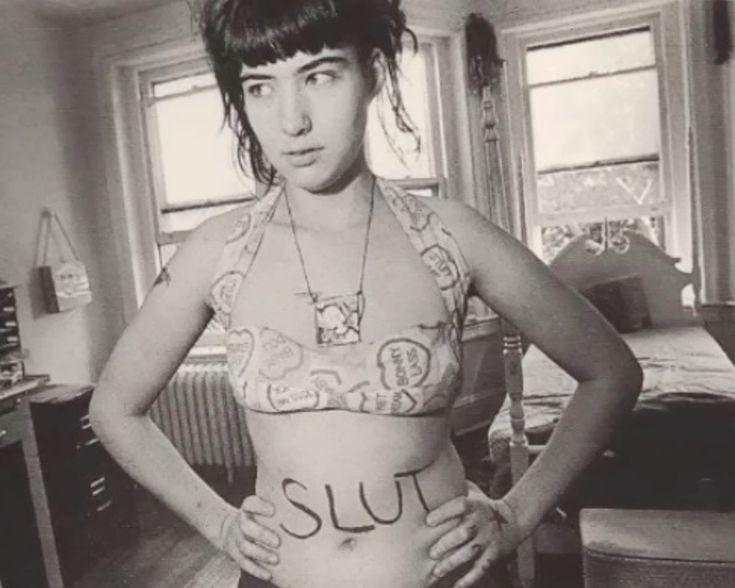
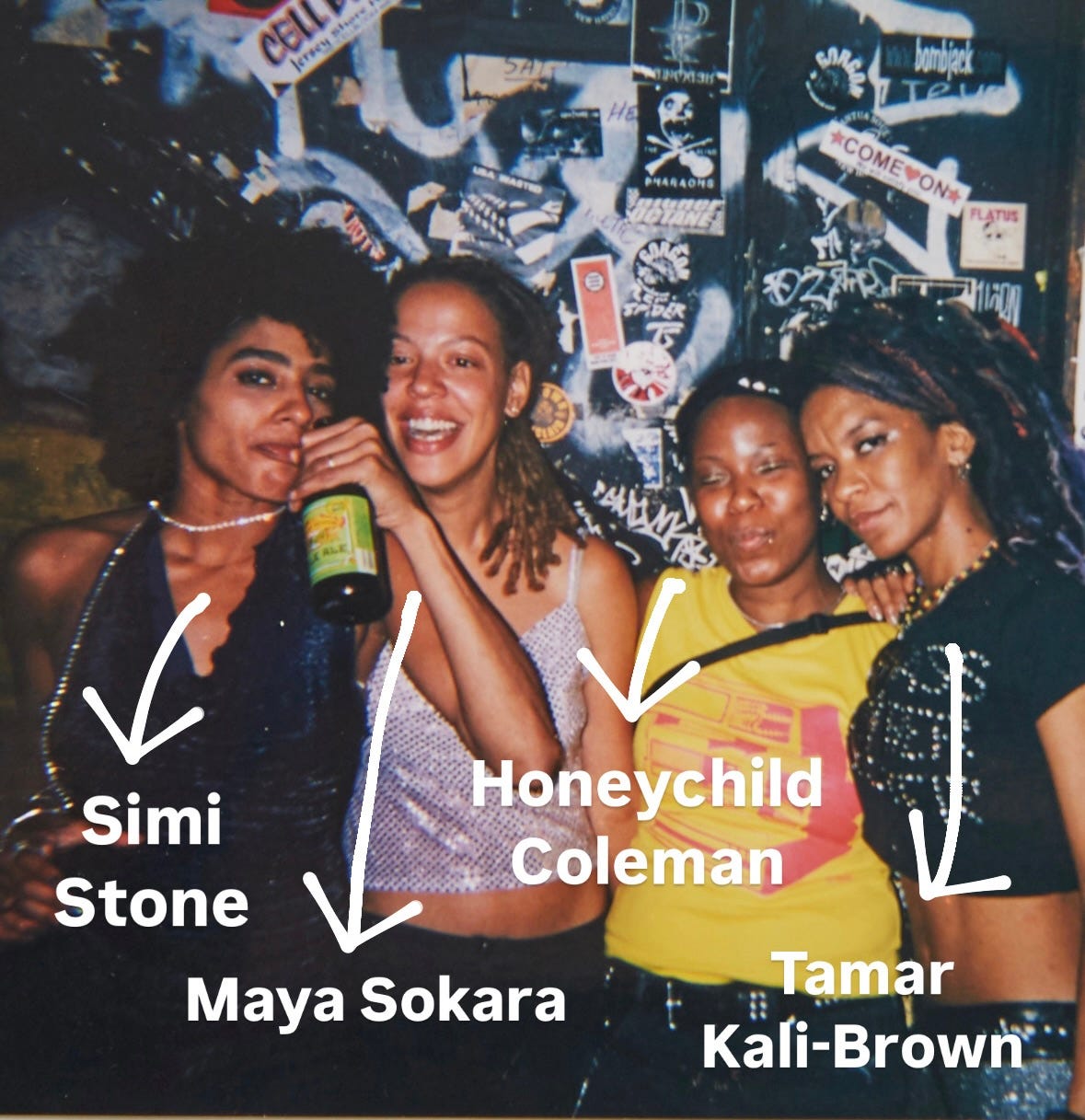
Great read! Look forward to the next.